

European
Nuclear Society
e-news
issue 33: June 2011
Not surprisingly, one event has dominated the nuclear agenda in the last few months – and will doubtless continue to do so for a long time to come - the dramatic and unprecedented events that occurred at Fukushima in March and their aftermath. This edition of ENS NEWS reflects that reality.
With the political and media focus on nuclear safety understandably sharper than before Fukushima, and the process for elaborating the stress tests criteria having proven to be quite a can of worms, it would be logical to assume that the wind might have been taken out of the nuclear industry’s sails. And yet, in spite of the anti-nuclear fraternity whipping up a media storm, and notwithstanding the negative political fall-out that has occurred in Germany, Italy and Switzerland, the nuclear industry has charted a relatively steady course through stormy waters. The European nuclear community as a whole has emerged reasonably unscathed from the unfolding drama in Japan. It has been quick to assert its commitment to learning the lessons of Fukushima and putting them to good use and to reaffirm its safety credentials. Safety has always been, and will always remain, its top priority.
It is significant to note that there has been no significant loss of forward momentum in the majority of countries that have new build projects in place or are preparing to launch nuclear for the first time. Although there has been an undeniable and inevitable decrease in public confidence registered in some countries, this has not been as dramatic or across-the-board as one might have expected. Indeed, public acceptance of nuclear energy has held up well under the circumstances. Of course, it remains to be seen how developing events in Japan, and the results of the stress tests once they have been carried out, are likely to affect the nuclear community in the medium and long term. Contributions to this and future editions of ENS NEWS will doubtless reveal how the nuclear science community, from the grass roots up, is experiencing the post-Fukushima era. One thing is for sure – Fukushima has been a watershed moment for the community.
N° 33 kicks off with the traditional Word from the President opener, which puts the spotlight on the subject of education and training and features an unusual reference to the famous American Indian chief, Sitting Bull. Fukushima is back on the agenda as Andrew Teller’s thought-provoking contribution focuses on the facts and polarised opinions that have emerged three months after the Fukushima accident occurred and compares Fukushima with Chernobyl.
The Events section features two contributions that concentrate on that ENS flagship conference dedicated to nuclear education and training - NESTet 2011. The first is a general report and appreciation of this important international conference compiled by participants from FORATOM and ENS. The second one is delivered from the perspective of COGENT, the Sector Skills Council for Chemicals, Nuclear, Oil and Gas, Petroleum and Polymers, in the UK. COGENT and the OECD/NEA joined forces to present a session on education and training at NESTet
This edition has a bumper Member Societies and Corporate Members section. It features detailed reports and news updates from the French, Bulgarian, Spanish, Hungarian and Romania societies. Also included are: an analysis by SCK-CEN of the results of two recent multi-partner research projects focusing on waste management models, which received funding under EURATOM’s FP5 and FP7 programme; the latest in high-tech gamma radiation dose measurement technology and two Westinghouse events related to supplier networks and the post-Fukushima stress tests, respectively.
The YGN Report section of ENS N° 33 offers articles from the Belgian and Spanish YGN sections, a tribute to the winner of the Jan Runermark Award (Helmut Böck) that was recently announced by the Austrian YGN and a report by the Czech YGN on the European Nuclear Young Generation Forum (ENYGF) 2011, which ran back-to-back with NESTet 2011, in Prague.
The ENS World News section contains the usual selection of newsworthy stories that made the NucNet front pages, an early teaser on next year’s International Youth Nuclear Congress (IYNC 2012), in Charlotte USA, and a reminder of the busy schedule of ENS sponsored conferences in the pipeline.
I would like to wish all ENS NEWS readers lots of fun, sun and well-earned rest during the summer break. Hopefully you will return refreshed, energised and not too sun-burnt.
Enjoy your ENS NEWS N° 33!
|
http://www.euronuclear.org/e-news/e-news-33/presidents-contribution.htm


I recently had the pleasure of opening NESTet 2011, an international conference dedicated to the subject of nuclear education and training. This flagship ENS conference, which took place in Prague, emphasised how the Society has always placed great importance in the subject of education and training for the nuclear physicists, engineers and researchers of tomorrow. Indeed, ENS NEWS recently devoted an entire edition to this subject and, as those of you who know me will testify, this has always been a subject very close to my heart.
One topic that featured high on the NESTet 2011 agenda was the issue of knowledge transfer. As the older “nuclear generation” gradually reaches retirement age, the need to pass on its vast knowledge and experience to the next generation - the future standard bearers of our industry - is paramount. This priceless reservoir of knowledge must be preserved at all costs. Without it the nuclear resurgence would stall and the future prosperity of the nuclear community would be in jeopardy.
One event that sums up eloquently the importance of encouraging this symbiosis of the generations, of promoting education and training, is the attribution of the annual Jan Runermark Award. The award was created back in 1995. It commemorates the significant role that Jan Runermark, the initiator of the Swedish Young Generation Network and promoter of the ENS Young Generation movement, played in promoting nuclear education and training in Europe. Sadly, Jan, a former President-Elect of ENS, died in a car crash soon afterwards. But his memory lives on thanks to this prestigious award.
I was invited to say a few words before the award was presented - on the eve of the European Nuclear Young Generation Forum (ENYGF) that took place back-to-back with NESTet. I referred to the speech that the famous Sioux chief, Sitting Bull, delivered in 1867 to the “great white father” – the President of the United States, Ulysses S. Grant. Concerned about the future of his tribe, Sitting Bull expressed his fear that there weren’t enough young buffalo bulls roaming the prairies to succeed the older bulls and that soon the herds might disappear altogether if something wasn’t done about it. Well, the analogy can be applied to the current dilemma facing our industry. But, as NESTet and ENYGF illustrated, something is being done about it.
The Jan Runermark Award is presented by the Young Generation Network in recognition of an individual’s outstanding contribution to the cause of nuclear education and training; to someone who has been a source of inspiration and motivation for young students to pursue a career in nuclear; to an experienced old bull that has dedicated his life to educating the young pretenders. This year the award went to Helmut Böck, the President of the Austrian Nuclear Society. Helmut graduated in technical physics from the University of Vienna back in 1966 and obtained his professorship in reactor safety from the same establishment in 1979.
He was Reactor Manager in charge of the TRIGA research reactor from 1967 to 2008. In a long and distinguished career Helmut worked as a consultant to the IAEA, advising the Agency on research reactor safety and technology, founded the Austrian Nuclear Safety (in 1980) and was instrumental in the setting up of the Young Generation Network in Austria. He has worked tirelessly to teach young students, to preserve and pass on that knowledge bank and to support countless Young Generation projects. To have achieved all this is worthy of receiving any award, but to have done so in a country where nuclear energy is taboo and officially banned, is remarkable. The Young Generation Network rightly paid tribute to him.
Helmut, and many others like him, plays a vital role in nurturing the present and promoting the future of nuclear energy. He is an example for us to follow. Sitting Bull would definitely have approved.
http://www.euronuclear.org/e-news/e-news-33/listening.htm


Three months after 3/11, a clearer picture is gradually emerging: we are starting to understand what actually happened on the site, we now see that an accident with the worst rating on the INES (International Nuclear Event Scale) scale does not necessarily lead to consequences as serious as those of Chernobyl and we have the confirmation that such events don’t do much to change the differences between the critics and supporters of nuclear energy.
In some countries, the Fukushima accident only stiffened the resolve of those who had already previously decided to exclude nuclear energy from their generating mix. The most conspicuous example is of course provided by Germany where the anti-nuclear movement has a long history of trying to put an end to domestic nuclear power generation because of mishaps that happened in places far away and in conditions that could not possibly prevail in their own country. It is worth recalling in this respect that after the Chernobyl accident in 1986, anti-nuclear demonstrators took to the streets to demand the closure of … RBMK reactors in the then Soviet Union? No, they were aiming at the light water reactors operating in western Germany, a country with one of the safest operating records in the world.
Other countries, and there are many of them, are sticking to their pre-Fukushima nuclear development plans, the nuclear option being still regarded as having too many advantages to be overlooked. Of course the decision-makers there recognise that having to impose an exclusion zone around the NPP site increases both in space and time the consequences of the devastation wrought by the natural disasters of 3/111 . But they also know that each accident is followed by the world-wide implementation of new measures reducing the likelihood of further accidents. They also know that each new train of measures does not simply address the problem that triggered the accident, by simply “locking the stable door after the horse has bolted” as the saying goes. These trains of measures are designed, not just to address a particular accident scenario (which already has its merits since a given scenario can repeat itself in different places), but to counteract all the weaknesses of the safety systems highlighted by the accident.
It is easy – and convenient – for either party to dismiss the other party’s position as utterly foolish. On one side, the anti-nuclear folks are often quick to accept any argument, no matter how weak it is, comforting their rejection of nuclear energy. Furthermore, their analyses are most of the time so neatly adjusted to their conclusion that the former seem to flow from the latter instead of leading to it. On the other side, while the supporters of nuclear energy are not prone to the same shortcomings in their analyses, their position assumes an overall safety record far better than what it turned out to be. This is why assuming that the guy opposing one’s views is is an idiot might be both reassuring and comfortable, but it would deprive us of some useful insights. Once we dispel the fog of fuzzy thinking on one side and unfulfilled forecasts on the other, it becomes possible to identify the premises governing the behaviour of both parties. On the anti-nuclear side, the basic premises are that “ensuring the safe operation of nuclear power plants is an impossible task” and that “any energy policy excluding nuclear energy is preferable to the having to live with the risk of incurring a nuclear accident”. The basic tenets of the pro-nuclear side could by summarised as “it is possible to improve the safety record of nuclear NPPs to a degree acceptable to everybody” and “the drawbacks of nuclear power generation are less than those that would result from depriving our power-hungry world of such a steady, CO2-free, energy source”.
So, although the positions of both parties are highly asymmetrical from the tactical point of view of the battle of arguments (as was pointed out in my previous column), it can be considered that the root positions of both parties are on the contrary symmetrical: neither can be demonstrated nor disproved; both are equally honourable insofar as they both stem from the same desire to ensure the well-being of humankind. This interpretation is comforted by the fact that numerous intelligent, highly educated, people are found in the ranks of both critics and supporters of nuclear energy. If one position could be demonstrated to be more appropriate than the other, all these people would have adopted it already. The consequence however is that the future of world energy consumption will continue to be submitted to the unpredictable opposition of those who want to rule out any accident risk and of those who think energy shortages could wreak even greater damage.
1The fact that the quantity of damage incurred is overwhelmingly due to the twin natural disasters and not to the man-made facilities won’t however move the critics: they will claim that natural disasters are unavoidable whereas humans should refrain from doing anything that could make them worse. This argument is not new; it dates back at least to the XVIIIth century, when Rousseau and Voltaire exchanged conflicting views on the great Lisbon earthquake. It is interesting to note that the controversy ran then about whether one should live in multi-storey buildings or not. Today, nobody is questioning this fact anymore. It seems that the boundary between acceptable and unacceptable human constructions is gradually evolving
http://www.euronuclear.org/e-news/e-news-33/nestet-2011-2.htm

The latest edition of ENS’ flagship NESTet (Nuclear Engineering Science and Technology Education and Training) conference took place in the Czech Republic’s beautiful capital city of Prague, from 15 – 18 May 2011.
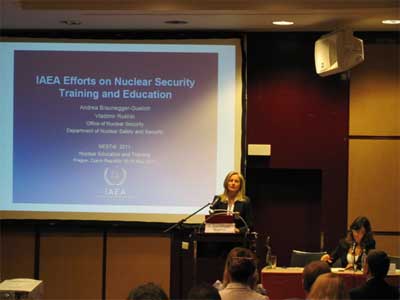
Around 150 participants from 30 countries took part in this important conference – the second time it has featured on the Society’s international conference agenda. Its main objective was to mobilise teachers, trainers, national and EU level decision-makers and all those people responsible for human resources and skills development in the sector to discuss the key issues relating to nuclear education and training. And this objective was certainly achieved as the conference hall in the Diplomat Hotel was filled to capacity. The name of the game during the four-day conference was above all sharing experiences, facilitating networking, stimulating debate and promoting action, so that all sectors of the nuclear engineering, science and technology community can benefit – today and tomorrow.
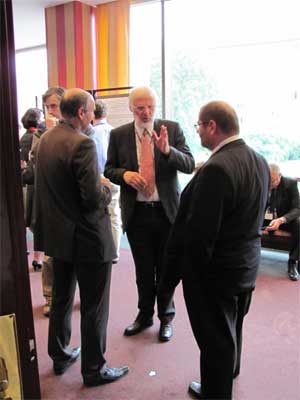
In his opening speech ENS President, Professor Vladimir Slugen, underlined how vitally important it is for the nuclear sector to provide top-class education and training in order to develop the nuclear professionals of tomorrow who will drive forward the nuclear industry and research sectors. He added that providing training in safety is all the more important since the accident that occurred at Fukushima in March.
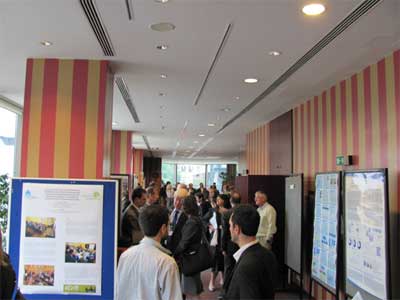
A total of 66 presentations were made. Among the agenda highlights were topics such as improving access to teaching expertise at the higher education level, boosting the numbers of students studying for nuclear-related degrees, meeting industry’s demand for graduates, maximising the range of training courses on offer and satisfying the future needs of employees in the nuclear sector. The agenda highlighted the crucial importance of developing an efficient and effective nuclear education system across the EU and designing the progressive training systems that will deliver the skilled workforce needed to satisfy this dynamic and rapidly evolving industry.
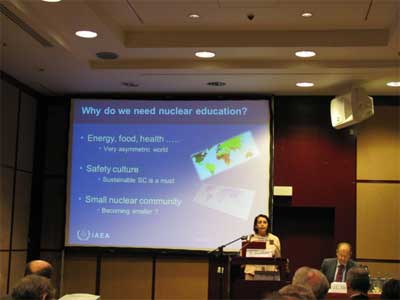
In addition to the presentations and debates a further 40 posters exhibitions were on permanent display throughout what proved to be a very informative, focused and successful conference.
Immediately after NESTet the European Nuclear Young Generation Forum (ENYGF) took place (see report written by the Czech Young Generation)
For further information consult the ENS website at the following link:www.euronuclear.org/events/nestet/nestet2011/index.htm
http://www.euronuclear.org/e-news/e-news-33/nestet.htm

During the recent NESTet conference in Prague a number of interesting presentations were given on the subject of nuclear education and training. Among those who presented were COGENT. The following COGENT report summaries the subject and scope of their presentation.
Cogent Director of Science and Research, Dr Brian Murphy, presented alongside Maria Elena Urso, from the OECD Nuclear Energy Agency (NEA) on the theme of Nuclear Education and Training and Assuring a Competent Workforce at the Nuclear Engineering Science and Technology conference (NESTet 2011), which took place from 15 to 18 May in Prague.
This important European Nuclear Society (ENS) conference was dedicated to networking in nuclear education and training across the fields of engineering, science and technology.
Dr Murphy said: “this is a great example of Cogent, the UK skills council for nuclear, jointly working with an international body and international outreach for our work on industry training frameworks, standards and the National Skills Academy for Nuclear’s Skills Passport and quality assured provision.”
The speakers set out:
• the feasibility of a comprehensive taxonomy for nuclear job roles and competences
• that an international taxonomic system can add value through a common language of competence
• that education, training and experience can be recognised at international and national levels
• that the system has the potential to further the ambitions of the international nuclear industry in safety, mobility, HR planning and knowledge management.
Drawing from Cogent’s peer-reviewed labour market research and standards
development in the UK and the proceedings of OECD-NEA, the papers submitted
explored the potential of an international Nuclear Skills Taxonomy that is underpinned
by robust evidence, occupational standards, independent accreditation of workforce
development and training.
Dr Murphy added, “nuclear is part of the energy mix of many European countries and, prior to the recent disaster at Fukushima in Japan, the sector was seen to be emerging from a ‘doldrum’ decade with new build underway in several countries
“While further developments will undoubtedly pause to reflect on lessons learnt, the ‘renaissance’ drivers that positioned new nuclear power as a credible part of the medium-term energy mix remain; these drivers are the prospects of energy security and low carbon electricity.
“Fukushima will have an impact on consideration of lifetime extensions of current nuclear estates for example, in Germany. It will also inform new build designs that are under assessment or planning, for example, in the UK and Italy. Decommissioning, which requires expert skills, nevertheless, still remains for all countries that have had or are planning new generations of nuclear power.”
The conference was timely, focusing on exchange of information on available nuclear expertise, capacity, infrastructure and needs.
Jean Llewellyn, Chief Executive of the National Skills Academy for Nuclear commented: “nuclear education, training and assuring a competent workforce for the nuclear industry is a subject which is the premise of the collaborative work undertaken by the Skills Academy and Cogent Sector Skills Council, and I am grateful that Dr Brian Murphy was available to speak partly on our behalf at this hugely important event."
“Following the Fukishma event, the spotlight is firmly placed on the nuclear skills agenda. Dr Mike Weightman’s first interim report post the Fukushima incident outlined the imperative of having the right training and skills development in place across the UK nuclear industry both to ensure safety and to maintain the highest standards of nuclear operations.
“We firmly believe the Nuclear Skills Passport and the Nuclear Industry Training Framework will aid in ensuring the UK has the skilled and highly competent workforce it needs to continue safe and efficient decommissioining and operation of its existing and new build sites”
Clive Smith, Cogent’s Skills Director for Nuclear, a former Senior Manager in the sector and who works closely with the employers said, “this important European Nuclear Society Conference on education and training was designed to facilitate collaboration and sharing of best practice. It provided an opportunity for the UK nuclear sector to highlight the coordinated approach that is being taken across a broad spectrum of employers, skills bodies and Government.”
Cogent is the Sector Skills Council for the chemicals, pharmaceuticals,
nuclear, oil and gas, petroleum and polymer industries. It has recently taken
on sectoral responsibility for bioscience. It is the voice of employers in these
industry sectors and is working with them to design qualifications; attract
young people into the Sector and understand their needs through comprehensive
research. Cogent currently represents the interests of a sector which employs
around 900,000 people in high value jobs and indirectly supports around three
times as many.
www.cogent-ssc.com -
For press enquiries contact: Judith Holcroft on: 01925 515 215
http://www.euronuclear.org/e-news/e-news-33/cm.htm

At the recent ENS General Assembly three new corporate members were welcomed into the Society’s fold. They are:
Atomic Energy of Canada Limited (AECL) is a leading-edge nuclear technology and services company providing services to utilities worldwide. Over 5,000 highly skilled employees enthusiastically deliver a range of nuclear services: from R&D support, construction management, design and engineering to specialised technology, waste management and decommissioning in support of CANDU reactor products.
AECL
George Bothwell
Senior Vice President, External Relations and Communications
Email: bothwell@aecl.ca
www.aecl.ca
VNS Vinçotte Nuclear Safety (VNS) is a Belgian consultancy that delivers expert advice and services in the field of nuclear safety and security - in particular the development of safety files, the provision of safety and security training and the enhancement of its clients’ safety culture. VNS, which was created in July 2010, has a highly qualified team of consultants who up until 2008 had worked as regulators controlling nuclear installations in Belgium.
VNS – Vinçotte Nuclear Safety
Sammy Shihab
Managing Director
Email: sammy.shihab@vnsafety.eu
www.vnsafety.eu
Linn High Therm GmbH is a family-owned business that produces industrial and laboratory furnaces and kilns, microwave furnaces, induction heating systems, precision fine casting systems and customer-specific systems. The company has a very broad range of high-tech products with which it provides services to industries such as the metal, ceramics, chemicals, glass, building materials, research and development, medical, nuclear, recycling, education and foodstuffs sectors.
Linn's mission is “innovation and continuous improvement.” The company was awarded an ISO 9001/2000 certificate in 1994.
Linn High Therm GmbH
Horst Linn
email: info@linn.de
www.linn.de
ENS NEWS would like to join its readers in welcoming these three new corporate members to the ENS family!
http://www.euronuclear.org/e-news/e-news-33/sfen.htm

The accident at Fukushima did not suddenly make the reasons that so strongly support the further development of nuclear energy, both in France and globally, disappear, as if by magic. By 2050 the population of planet earth will have expanded from 6.5 billion people today to over 9 billion. Even if we (the rich countries) succeed in substantially reducing our energy consumption, much more energy will in any case have to be produced worldwide. Our main sources of energy, fossil fuels such oil, gas and coal, are rapidly disappearing. Viewed within this context, the contribution of nuclear energy, which can produce continuously massive supplies of electricity, is particularly precious.
Nuclear energy which, unlike fossil fuels, does not emit CO2, also addresses that other great problem confronting mankind today: global warming. Of the more than 30 billion tonnes of CO2 that are released into the atmosphere each year as a result of man’s energy production activities, 15 billion of them will have to be “saved.”
A properly developed nuclear sector, which replaces fossil fuels, would enable an annual saving of not just 2.3 billion tonnes of CO2, as is currently the case, but rather a total of 5.6 billion tonnes of CO2. This would not provide a total solution, but it would go a long way towards controlling the risk of climate change. To deny ourselves recourse to such a contribution would be a grave ecological error.
Of course, certain anti-nuclear organisations forcefully promote scenarios based on the claim that a combination of large-scale energy savings and the accelerated development of renewables would enable us “to dispense with nuclear.” And this, they maintain, holds true both for France and globally. These scenarios are a tool used to justify a militant cause. They are not the result of genuine scientific study. Furthermore, they are far from convincing because the amount of energy savings and the contribution from renewables that underpin the scenario are both quite unrealistic.
In our country which, unlike Germany, has no coal, oil or gas, nuclear is synonymous with security of supply. Indeed, thanks to this energy source and to the contribution of hydraulic energy, France is now capable of producing all its own electricity, quite independently of any outside market. Areva, the world’s number one producer of uranium, owns and/or exploits significant uranium mines in America, Africa and Asia. This stock of energy reserves amounts to the equivalent of 35 years of national consumption. Within what is an increasingly worrying global energy context, this controlled access to uranium resources provides France with a precious energy security insurance policy.
In addition to this independence, which protects France from instability, crises and “price hikes” that can impact upon international energy markets, nuclear energy enables us to generate electricity for long periods of time at a moderate and stable cost (this covers the handling and storage of waste and the cost of dismantling facilities, for which EDF, CEA and Areva put money aside every year). It is nuclear energy’s economic competitiveness that explains why French consumers pay 35% less for their electricity than the European average. Furthermore, the nuclear sector enables France to export each year equipment, electricity and services equivalent, on average, to €6 billion. These exports support thousands of jobs.
If France were to turn its back on nuclear, energy savings and renewables alone would be nowhere near capable of compensating for the resultant shortfall in electricity. We would, inevitably, be forced to import massive amounts of gas. Such a scenario really would be a challenge because our country would then find itself forced to depend for most of its electricity supply on an energy source that is rapidly running out. All points to the fact that gas prices will rise and supplies will become scarcer and less guaranteed. France would lose the energy independence that nuclear energy gives it and instead become dependent upon the global gas market, which is dominated by Russia, Iran and Qatar. Each year this would cost France billions of Euros and French citizens would, inevitably, have to pay much more for their electricity.
Finally, after having succeeded in building up an electricity generating sector that produces virtually no greenhouse gases, France would then have to replace this with an alternative system that would emit millions of tonnes of CO2 every year, thereby exacerbating global warming.
It’s difficult to see how France has anything to gain from turning its back on nuclear energy, but it’s very easy to see what it has to lose.
Francis Sorin
SFEN
http://www.euronuclear.org/e-news/e-news-33/bulgaria.htm


The Bulgarian Nuclear Society (BgNS), under the patronage of the Bulgarian Nuclear Regulatory Agency and in cooperation with the European Nuclear Society (ENS) and Institute for Radiological Protection and Nuclear Safety (IRSN), France, held its annual conference from 26 - 29 September, 2010 at the Black Sea coastal resort of Nessebar, Bulgaria. This year’s conference was entitled: Nuclear power for people.
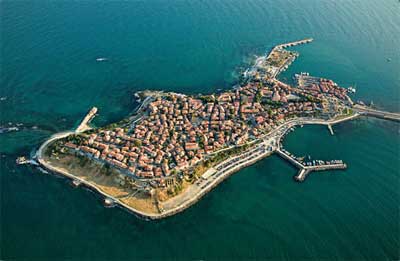
Nessebar, the Pearl of the Black Sea
Nessebar is a town with a rich history, often referred to as the "Pearl of the Black Sea." Its abundance of historic buildings prompted UNESCO to include it in its list of World Heritage Sites, in 1983. Nessebar is one of the oldest towns in Europe. It is the « successor » to the ancient Thracian settlement called Mesambria that was founded at the location in the Second Century AD. Around the year 680, the town was an episcopal centre, and from the VII - VIII centuries it was an important, strong and well-protected Byzantine naval base. In the year 812, Khan Krum conquered the town. In 864, Boris I yielded possession of the town to the Byzantines, but King Simeon subsequently recaptured it.
In 1956, Nessebar was proclaimed an architectural and archeological conservation site. The remnants of an antique fortified wall with a gate dating from III - IV Century, the churches from V -VI centuries and the others dating from the medieval period (X - XIV centuries) - which are fine works of the medieval Bulgarian and Byzantine architecture - and 60 houses dating from the revival period, give the town a unique appearance and atmosphere.

The Annual Conference brought together young and experienced specialists working in the field of nuclear energy, as well as in the field of medical physics - for which nuclear technology is applied to enable radiotherapy to be delivered to patients. The conference also gives an opportunity to specialists to exchange knowledge and experience. Reports were presented and discussions took place throughout the conference. They were focused on the various applications of nuclear science for the good of the public and on the key role that the human factor plays in both nuclear medicine and in the training of specialists for the nuclear industry.
The conference was attended by prominent Bulgarian and foreign scientists, experts and young professionals in various fields - physicists, engineers, chemists, physicians from the Bulgarian Academy of Sciences, the Nuclear Regulatory Agency, NPP Kozloduy, the universities of Sofia, Plovdiv and Varna, the National Center for Radiobiology and the Medical University of Sofia. Also present were companies active in the field of nuclear energy, from nuclear research centers in Belgium, France, Russia, Japan, India, to the European Commission, the European Joint Research Center and the European Nuclear Society.
The list of the invited lecturers included: Gerard Cognet (CEA, France), Y. Yanev (IAEA, Vienna), V. Sabelová (FEI STU, Slovakia), O. Berar (Slovenia), R. Svoboda (CNS, Czech Republik), J. Deckers (Belgoprocess N.V, Belgium), Z. Szaraz (JRC, EC), A. Bentaib, E. Wattelle, V. Bertrand, P. Dupuy, B. Dimitrov, L. Sabotinov, N. Matahri (IRSN, France), M. Sage (Worley Parsons), Neli Yankova (BNRA), Tihomir Apostolov (INRNE), etc.
A pilot training course entitled: RPV Surveillance Programme - was prepared and organised by A. Ballesteros (Spain). The course leader was Tatiana Karseka of the IAEA. The course was useful for PhD or Master Students, as well as young professionals. Those who attended received a certificate.
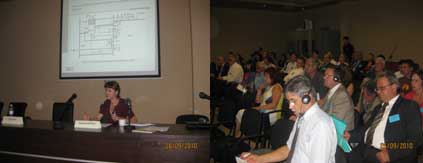
People attending the RPV Surveillance Programme training course
As usual an annual competition to recognise and reward young authors had been organised. Young specialists once again had the opportunity to present and gain recognition for their work and during the conference the three best ones were awarded prizes, as follows:
First Prize went to K. Philipov, of the Technical University of Sofia, Bulgaria, for the report entitled: INTERNAL FLOODING DYNAMICS MODELING – VERIFICATION ANALYSIS
Second Prize went to D. Lefterova, of the National Centre of Radiobiology and Radiation Protection, Bulgaria for the report entitled: POTENTIAL FOR REDUCTION OF PATIENT DOSES IN PEDIATRIC CT EXAMINATIONS.
Third Prize went to Ovidiu-Adrian Berar, of the Jožef Stefan Institute", in Ljubljana, Slovenia, for the work entitled: TRACE CODE VALIDATION AGAINST ACHILLES REFLOOD EXPERIMENT.
An additional prize was also awarded to V. Sabelová, V. Slugeň and T. Kliment, of the Slovak University of Technology, in Bratislava, for their combined work entitled : SAFETY ANALYSIS OF THE INITIATING EVENT : TRIP OF MAIN CIRCULATION PUMPS AT MOCHOVCE NPP UNIT 1, USING CONSERVATIVE AND BEST ESTIMATES APPROACHES AND UNCERTAINTY EVALUATION OF BASE CRITERION PARAMETER.
There was also a best poster award, presented to the young author M. Kocheva, of INRNE - BAS, Bulgaria, for the poster entitled: INVESTIGATON OF CSF HEAT SINK FOR VVER1000 REACTOR IN SHUT DOWN CONDITIONS.
The conference was a very interesting event. A number of key issues were also debated from a science management point of view. All scientific and technological papers from the BgNS conference will be published in BgNS Transactions – the society’s science and technology journal. During the conference special emphasis was put on establishing closer collaboration within the Balkan region.
The Bulgarian Nuclear Society would like to express its concern about the need to preserve and ensure that the human resources needed to sustain nuclear energy, today and tomorrow, are made available.
Ms. Boryana Atanasova, M.Sc.
Bulgarian Nuclear Society
Executive Secretary
Phone: (+359 2) 979 55 83
Cell:-(+359 87) 7 382 384
Fax:-(+359 2) 975 3619
E-mail: b_atanasova@inrne.bas.bg
http://www.euronuclear.org/e-news/e-news-33/sck-cen.htm

Isolation in deep geological formations (geological disposal) is now considered the safest of all long-term solutions to the problem of dealing with long-lived nuclear waste. Particular attention has been given worldwide to the high-level radioactive waste resulting from the spent nuclear fuel after discharge from nuclear power plants, as it constitutes more than 98% of the radioactivity generated in these plants. This high-level radioactive waste can be in vitrified form for those countries with reprocessing options. Alternatively, the spent fuel itself can be considered as a form of waste.
Potential disposal locations in Europe, in granite, clay or salt formations, are stable for tens of millions of years and are characterised by very slow groundwater movement. Research at international level has been on-going for more than 30 years. Large experimental data bases have been generated to simulate the long-term interaction of groundwaters with different types of nuclear waste glass and spent nuclear fuel. This includes glass with compositions similar to those produced in reprocessing and associated vitrification plants in La Hague (France), Mol (Belgium), Sellafield (U.K.) and Karlsruhe (Germany), as well as low and high burn-up spent fuels from PWR, BWR, HTR and MTR reactors.
A considerable effort has been made to develop descriptive and predictive modelling procedures. The long-term stability of the waste solids in groundwater must be deduced from short-term laboratory experiments with a duration of a maximum of a few years. As a result, the evaluation of the performance of the spent fuel and glass over different geological time periods relies largely on the development of waste/groundwater interaction models and more general safety assessment models. This allows one to assess the long-term impact of glass and spent fuel/water interactions on the overall level of risk associated with the nuclear waste repository. This assessment has to take into account the inherent uncertainties in the understanding of the processes considered in the model, the parameter uncertainties and the uncertainties in hydrogeological boundary conditions. The repositories are planned for siting in places characterised by very slow geological evolution, but the presence of waste disturbs the systems in place there and the return to natural conditions may take hundreds of thousands of years. Also uncertainties regarding the scenarios for this evolution over various geological time periods must be taken into account.
The GLAMOR and MICADO projects, which coordinated actions carried out recently by the European Commission, have assessed the uncertainties in the models and described the dissolution processes of nuclear waste glass containers and spent nuclear fuel in a repository over geological time periods. These projects were special in the sense that a common set of existing experimental data and existing models were selected. These models were applied in each project and the results discussed. Care was also taken that participants in the projects should present the various scientific opinions.
The GLAMOR project, coordinated by the Belgian Nuclear Research Centre, SCK•CEN, and carried out between 2002 and 2006, assessed the principal hypotheses and uncertainties of models for the dissolution of nuclear waste glass in pure water systems without repository near field materials (such as bentonite, metallic corrosion products etc.). Key European partners (SCK•CEN, CEA, SUBATECH/ARMINES) joined forces for the project with experts from leading US laboratories (SRNL, PNNL). Two reference analytical models selected by the partners were jointly evaluated using a common experimental data set.
Some of the main conclusions reached from the GLAMOR project were as follows:
It was agreed that a residual dissolution rate exists for nuclear waste glass in pure water. This residual "final" dissolution rate can be very important for the assessment of the barrier function and the lifetime of the glass, because it is as much as 10,000 times smaller than the initial dissolution rate. Lifetimes for vitrified high-level waste blocks of around 100,000 years and more can now be predicted in such environments. The residual dissolution rate should be considered also in the safety assessment calculations for a geological disposal site, but there is a need for further documenting and understanding the processes behind this residual rate in order to be able to extrapolate the findings of the short-term tests in simple systems to the long-term repository conditions.
The dissolution rate decreasing stage that precedes the residual dissolution rate could be explained by several mechanisms included in the models. The model simulations did not allow one to decide which mechanism was dominant, but the comparison did give a clear overview of the key problems that arise when interpreting the results, and showed the weaknesses in the underlying conceptual models. This has provided a basis for further subsequent model development.
The approach followed in the GLAMOR project formed the basis for a similar coordinated project called MICADO, which was carried out between 2007 and 2010. This project was coordinated by SUBATECH Nantes (France). It consolidated the work of many European waste management agencies, technical organisations that support regulators, universities and research organisations. The organisations that participated in the MICADO project were CEA, ANDRA and IRSN from France, SCK•CEN and BEL-V form Belgium, KIT Karlsruhe, ITU and GRS from Germany, ENRESA, UPC, CIEMAT and AMPHOS21 from Spain, SKB, SSM, Studsvik and KTH from Sweden, NAGRA from Switzerland and Quintessa from the United Kingdom. Many of world's leading experts participated in the project. The general findings were shared by waste management organisations and the technical organisations that support the regulators.
A careful questioning of current experimental knowledge, hydrogeological boundary conditions and current understanding of the physico-chemical processes controlling the radionuclide release was done in order to identify key uncertainties. Separate uncertainty analyses were carried out (1) for the evolution of spent fuel for the first few thousands of years, when the container is still intact, (2) for the next few hundreds of thousands of years – a period that is likely to be characterised by hydrogen saturated conditions with hydrogen arising from container corrosion and (3) for very long subsequent time periods, which are characterised by conditions where hydrogen concentrations have diminished but the ambient condition remains one of reduction.
Some of the main findings were as follows:
The uncertainties on the surface area of spent fuel exposed to solutions, which is a very important parameter for calculating the dissolution rate, could be strongly reduced, and ranges were agreed for the value of the dissolution rate in periods 2 (presence of H2 – see above) and 3 (absence of H2). The dissolution rates in periods 2 and 3 are between 0.02 and 5 µg.m-2.d-1, depending, amongst other things, on the value chosen for the total accessible specific surface area (ranging between 10 and 72 cm2/g).
The occurrence of the dissolution inhibition effect of H2 formed by container corrosion was confirmed, although the underlying mechanism is not really understood.
The significance of the various release controlling processes and their uncertainties on spent fuel dissolution rate and the activity fluxes released by a nuclear waste repository have been assessed both by waste management and technical support organisations. Spent fuel dissolution and radionuclide release rates are important parameters in assessing performance. However, the characteristics of the disposal components (including sorption, diffusion and advective flows) also strongly influence the transfer of radionuclides to the biosphere. The results show that spent fuel is an effective isolation barrier for tens of thousands to millions of years. They also show that the instant release fraction (corresponding to the radionuclides in the different "not confined" zones of the spent fuel packages, for example the zirconia cladding layer) is the dominant dose contributor if the matrix dissolution rate is small (in the range mentioned above) and the resulting lifetime of the spent fuel is significantly longer than 106 years.
The validity and relevance of model and experimental data for long-term spent fuel behaviour has been assessed in comparison with the observations made of the reaction behaviour of naturally occurring minerals with partially similar compositions as spent fuel - such as natural uraninite.
In conclusion, this way of launching relatively low cost research has enabled us to reach a common understanding or consensus on a number of critical issues in the chemical durability of both high-level waste glass and spent nuclear fuel. Both projects also led to the identification of some key questions for further action. The findings should contribute to enhancing the credibility of our research, because they were reached jointly by international experts.
The research that led to these results received funding from the European Union's European Atomic Energy Community's (Euratom) Fifth and Sixth Framework Programmes, under the grant agreements FIKW-CT-2001-20140 (GLAMOR Project) and 36366 (FI6W) (MICADO project).
GLAMOR: A Critical Evaluation of the Dissolution Mechanisms of high Level Waste Glasses in Conditions of Relevance for Geological Disposal, P. Van Iseghem, M. Aertsens, S. Gin, D. Deneele, B. Grambow, P. McGrail, D. Strachan, G. Wicks, European Comission, EUR 23097 (2007)
MICADO: Model Uncertainty for the Mechanism of Dissolution of Spent Fuel in Nuclear Waste Repository, Final Report, B. Grambow, J. Bruno, L. Duro, J. Merino, A. Tamayo, C. Martin, G. Pepin, S. Schumacher, O. Smidt, C. Ferry, C. Jegou, J. Quiñones, E. Iglesias, N. Rodriguez Villagra, J. M. Nieto, A. Martínez-Esparza, A. Loida, V. Metz, B. Kienzler,
G. Bracke, D. Pellegrini, G. Mathieu, V. Wasselin-Trupin, C. Serres, D. Wegen, M. Jonsson, L. Johnson, K. Lemmens, J. Liu, K. Spahiu, E. Ekeroth, I. Casas, J. de Pablo, C. Watson, P. Robinson, D. Hodgkinson Eoropean Commission, EUR 24597 EN 2010
http://www.euronuclear.org/e-news/e-news-33/westinghouse.htm

On 12 and 13 April, the first-ever Westinghouse Europe, Middle East, and Africa (EMEA) Supplier Summit took place in Warsaw, Poland. The objective of the two-day summit, which developed the theme: “Getting Onboard, Getting Started, Getting Better,” was to help expand the company’s supply chain, and reinforce both its new regional model and long-standing “buy where we build” commitment. Representatives from more than 100 nuclear supply companies, from more than 17 countries, travelled from across the EMEA region to attend the summit.
This agenda focused on communicating the following:
Westinghouse’s organisational changes following the switch to a regional model and, in particular, how the structure under the new model affects suppliers
Its expectations for continuous improvement
Supplier requirements
Speakers during the event also stressed the importance of both engaging new companies in the EMEA supply base and strengthening relationships with existing suppliers as nuclear growth is expected to continue.
Westinghouse’s Senior Vice President of Operations Support, Dan Lipman, set the scene with a look at the status of the global nuclear industry in the aftermath of the tragic events at Fukushima. He expressed the view that while there are likely to be some delays in new plant projects, “the overall momentum remains in favor of nuclear playing a growing role in the world’s energy production,” with a continued shift toward passive safety designs such as the Westinghouse AP1000® nuclear power plant, and the benefits which that approach can offer. The passive features of the AP1000 design, which rely on the forces of nature and simplicity to enhance plant safety and operations, were explained in more detail in a later presentation by Miguel Palazuelos, a Project Manager from Westinghouse’s organisation in Madrid, Spain.
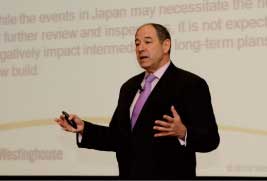
Westinghouse Senior Vice President of Operations Support Dan
Lipman projects nuclear growth despite events in Japan.
Details of projected growth in the nuclear business were expanded upon by Anders Jackson, Westinghouse’s President of the EMEA Region, and by Rita Bowser, Vice President of Major Projects for the EMEA Region. Mr. Jackson captured the attention of the suppliers’ delegates when he stated: “The aim is to double the scale of Westinghouse’s business in the EMEA region within five years, with the new plants and reactor services sectors being those where greatest growth can be expected.” He backed this up with a look at the new plant market where at least 60 GW of additional capacity is being discussed. He went on to say that: “Even if only a third of those projects were to come to fruition with a Westinghouse success rate of 50 percent, an attractive prospect of two AP1000 units per year would still result.“ And this would indeed be an attractive prospect for qualified suppliers as well.
Ms. Bowser outlined yet more substantial projects currently on the radar, such as reactor vessel head replacements, in addition to new plant market opportunities in the U.K., for which Westinghouse currently maintains approximately 600 qualified British supplier registrants in its supplier database.
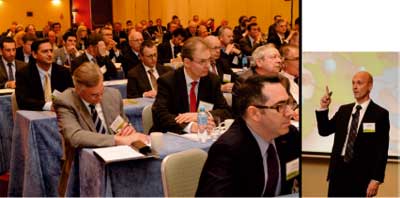
Supplier delegates listen as Anders Jackson, Westinghouse
president of the EMEA region, describes projected growth of nuclear
new build in the region they serve.
Mr. Jackson then remarked: “I am delighted that we are hosting this event here in Warsaw to bring together current and potential suppliers from across the EMEA region. Europe alone now accounts for 30 percent of Westinghouse’s global turnover, and a similar proportion of our global workforce is based here.” He added: “We have a policy to ‘buy where we build’ as far as possible – which means using local suppliers, rather than one single supply chain for projects across the world. But clearly those local suppliers must still be able to meet our quality requirements and to offer competitive pricing. Our aim through this event is to help as many suppliers in this region to make the grade.”
To assist suppliers in understanding the most effective approach for working with Westinghouse and “making the grade,” Juan Molina, Vice President and Chief Procurement Officer of Supply Chain Management, presented the specifics of the supply chain and procurement process and prompted a discussion on Westinghouse’s global supply chain management strategy. Mr. Molina outlined the need for suppliers to embrace the opportunities available and to develop a growing sense of urgency – things which he said Westinghouse has also been doing. He stressed that early and effective collaboration is the best method to ensure readiness to meet stringent nuclear market requirements.
Other sessions during the summit provided an update on Westinghouse AP1000 construction projects in the U.S. and China, explained the approach Westinghouse adopts there, and outlined the company’s expectations with regards to safety, quality, technical excellence, as well as human and environmental performance. How these weigh in with each supplier’s financial stability, his continuous improvement initiatives and organisational culture were also analysed. Additional information about the support Westinghouse can offer to companies looking to enter its supply chain for the first time was relayed to participants and an explanation of “who is who” in the company’s supply chain functions was given. A particular focus throughout the event was how Westinghouse and its supply base can collaborate to provide efficient operations for global customers.
In a change of pace, delegates and Westinghouse hosts also heard from Teresa Kaminska, President of the Pomeranian Special Economic Zone Region in the north of Poland. Pomerania contains the Gdansk shipyards and the neighbouring city of Gdynia, which form the connection between Pomerania and Westinghouse’s European supply chain. The modular approach adopted in the construction of the AP1000 plant lends itself to having the modules fabricated in shipyards or other similar facilities, and Westinghouse is investigating the potential of working with the Pomeranian Special Economic Zone to establish a major manufacturing and assembly center there. It was certainly clear from Kaminska’s speech that the establishment of a module fabrication facility in the region would be welcome. She also made clear that both she and the region are very supportive of the nuclear industry, and will work hard to make sure that Pomeranian businesses can play a major role in the future of the industry.
Closing the Summit, Mr. Molina urged suppliers not to underestimate the scale of the opportunity presented by the projected growth of Westinghouse’s nuclear business in the EMEA region, and stressed that Westinghouse is prepared to help suppliers become qualified to the appropriate levels. He also emphasised that the supply chain is a two-way street, and it is expected that suppliers looking to make the grade will also invest in achieving that goal. He stated that reasons to do so include the need to demonstrate and instill the necessary commitment to achieving success within their own organisations. Finally, Mr. Molina reminded the audience of an old Chinese proverb that says: “Opportunities always look bigger when they are going than they did when they were coming.”
The delegates at this event certainly left knowing that the opportunities available to Westinghouse’s supply chain partners in the EMEA region are very substantial and their remarks and feedback reflected the energy and enthusiasm felt on all sides.
Larisa Dubská, Director of Marketing and External Affairs at Envinet a.s., located in Modřínová, Czech Republic, stated that: ”The summit was a tremendous success, providing the right mix of knowledge and networking opportunities. It was my pleasure and privilege to exchange views with other participants and make new contacts.” She added: “I am looking forward to our fruitful and mutually beneficial cooperation on the territory of the Czech Republic and abroad in the fields of radiation monitoring, radwaste characterization, free release measurement, laboratory technology, etc.”
Jean-Jacques Laurent, of the company André Laurent, located in La Ricamarie, France, said that thanks to the event his company: “..could understand better the performance of the AP1000, the full Westinghouse strategy, and the Westinghouse requirements from partners-suppliers.” He added: “I hope that we can be a strong partner-supplier in the near future by responding to each of your requirements.”
[Footnote:
Ahead of the EMEA Supplier Summit, delegates had the opportunity to attend an exclusive, high-profile panel discussion entitled: Innovation and international industrial cooperation: Nuclear power as a response to the carbon emission challenge. This event was co-hosted by Westinghouse and the Warsaw University of Technology, and attracted considerable media interest. The participants in the panel were the U.S. Ambassador to Poland, Lee Feinstein, the Polish Government’s Commissioner for Nuclear Energy, Hanna Trojanowska and the Director of the Polish National Centre for Research and Development, Professor Krzysztof Kurzydlowsky]
http://www.euronuclear.org/e-news/e-news-33/sne-news.htm

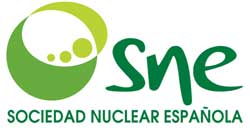
On June, the 2011 Technical Session of the Spanish Nuclear Society (SNE), entitled: The Implementation of the Regulations for Industrial Safety in Nuclear Power Plants, took place in the presence of Lola Morales, President of the SNE, Ignacio Mosso, President of AEGIC and Alberto Bernárdez, President of ASEICAM.
The 37th Annual Meeting that will be held from 28 - 30 September 2011 in Burgos is already open for registration. All the relevant information about the meeting is available at: www.reunionanualsne.es.
The ICAI-SNE Joint Conference, which was held at the Universidad Pontificia de Comillas, on 12 April 2011, was this year dedicated to: A National and International Overview of Nuclear Energy - a subject that, given current circumstances, is of particular relevance. Miguel Garcia Duvison, Operations Director at Red Eléctrica de España, gave a presentation entitled: The Contribution of Power Generation Technologies to the Safety of Supply in the Spanish System. Manuel Ibáñez Giner., Nuclear Energy Director of UNESA, then spoke about The Spanish Nuclear Power Stations: News and Perspectives. Finally, Juan Ortega Delgado, Business Development Director at TECNATOM, gave a presentation entitled: Nuclear Energy International Prospective. After the presentations there was a colloquium.
Young Nuclear Generation is actively promoting education and training for young people. It delivered its Annual Seminar on Advanced Reactors at the ETS of Industrial Engineering at the Polytechnic University of Madrid and its Basic Course of Nuclear Science and Technology at the Polytechnic Center of the University of Zaragoza.

The SNE has maintained its role as spokesperson for nuclear sector professionals, using press releases published on its website to keep members and anyone else interested in the evolving post-Fukushima situation informed about what is going on there and about resulting international action. Some of its members have further maintained this informative role by explaining in a comprehensible way to the general public - via the media - the events as they were unfolding.
Nuclear España, the monthly magazine of SNE that has been published in Spanish and English since 1984, devoted its edition N° 317 to the winter conference entitled: Nuclear Power Plants in 2010: Experiences and Perspectives.
SNE will shortly hold its annual competition for the allocation of 5 scholarships to the value of € 3,000 to students who meet the requirements mentioned in the call for entrants, namely to enrollment themselves in a Master's and/or postgraduate degree course in nuclear science and technology. All the relevant information is posted on SNE’s website at www.sne.es.
The SNE website also contains a glossary of nuclear terms
in Spanish that is growing constantly. It is a useful reference tool for members
of the nuclear sector.
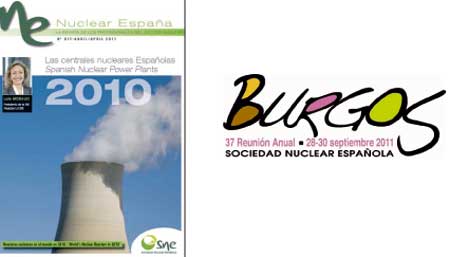
http://www.euronuclear.org/e-news/e-news-33/hungary.htm

The Hungarian Nuclear Society (HNS) was founded more than 20 years ago, on May 29, 1989. It is better late than never to celebrate this significant anniversary – that was the opinion of the current HNS Chairman, Ellöd Hollo, when the agenda for the General Assembly (GA) meeting was being prepared. Consequently, the GA that took place on May 19 2011 was devoted to recalling the main events that have marked the history of the Society.
Professor Zoltan Szatmary, the first Chairman of the Society gave a presentation on the early years. The HNS was founded by private individuals in order to facilitate and promote the peaceful use of the atomic energy in Hungary. Over the years the Society has operated as an independent non-profit-making organisation that brings together people from regulatory bodies, utilities, educational establishments, research centres and design organisations.
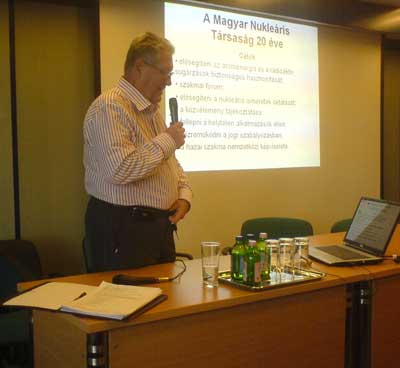
Prof. Zoltan Szatmary
Among the outstanding moments that have signposted the Society’s history was the visit of the famous Hungarian nuclear physicist, Edward Teller, to Hungary, several years after he had emigrated. Edward Teller, together with other well-known Hungarian scientists like Leo Szilárd and Eugene Wigner, won many distinctions in the field of nuclear reactor development in US during the mid-1990s.
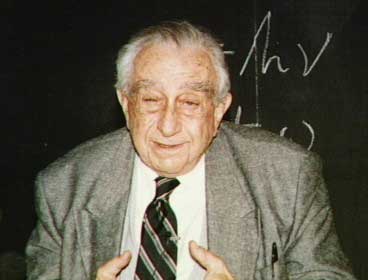
Portrait of Edward Teller
During the course of its history the Society has had 6 Chairmen who have coordinated its activities. All 6 were present at the GA meeting and contributed to the review that was made of the Society’s achievements since it was founded. The conclusion that was reached was that once the positive and negative factors influencing the future of nuclear reactors are taken into account, the role of such independent civil organisations as the Hungarian Nuclear Society will be upgraded.
http://www.euronuclear.org/e-news/e-news-33/ats.htm

The ATS Seniors group continued its programme of activities by organising a visit to Västerås, Sweden, from 20 to 22 March 2011. The visit was hosted by Westinghouse Sweden, the successor of ABB Atom (the designer of the Finnish Olkiluoto 1 and 2 Nuclear Power Plant units). A summary of the visit is available on the ATS web page (in Finnish). Altogether 14 seniors participated.
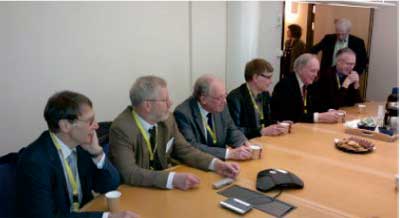
A part of the Round Table - participants in the ATS-Senior's visit to Westinghouse
Sweden.
ATS YG and the ATS Seniors group spanned the generations again by arranging a second topical seminar entitled: Nuclear Power to Finland. Altogether 86 members participated, 23 of whom were members of the YG network.
ATS organised a member event under the title: Tšhernobyl and Fukushima accidents in 26.4.2011: the 25th anniversary of Chernobyl. The event was one of the most popular events ever organized by ATS, attracting about 170 members. Four presentations were given: Jukka Laaksonen, the Head of the Finnish Radiation and Nuclear Safety Authority (STUK), started things rolling by giving a presentation entitled: Lessons from the Fukushima Accident, which highlighted also the early phases of the Chernobyl accident; Wendla Paile continued by summarising the health effects of Chernobyl and gave some updated information about the Fukushima accident; Jaakko Leppänen, from VTT, then gave a reactor physics view of the Fukushima accident and recounted the experiences he gained from the time he spent in Japan supporting the Finnish Embassy after the accident; Tarja Ikäheimonen finished the session by speaking about the environmental impacts of the accident and about the radiation protection measures undertaken in the area. Eija-Karita Puska, the President of ATS, opened and closed the meeting.
On 6 June, ATS organised a topical seminar dedicated to the past and future of nuclear power and radioactive waste issues in Estonia. Kalev Kallemets, from the Estonian Nuclear Power Association (www.tuumajaam.ee/index.php?id=10721), began by speaking about the plans in place to construct a new NPP unit in Estonia. Ivo Tatrik, from A.L.A.R.A. AS (www.alara.ee/), then presented the success stories and challenges associated with the management of historical radioactive waste from the Sillamae and Paldiski areas. Altogether 36 members participated the event.
Presentations from the above mentioned events are available in Finnish or English
on the ATS webpages at:
(www.ats-fns.fi/index.php).
http://www.euronuclear.org/e-news/e-news-33/romania.htm

From 25 - 27 May, the Institute for Nuclear Research (INR) in Pitesti, hosted the 4th edition of NUCLEAR 2011, an international conference that brings together nuclear researchers, academics experts, nuclear industry specialists and policy-makers. This latest edition of the conference has coincided with the 40th anniversary of INR - a national support organisation, heavily involved in the sustainable development of nuclear energy in Romania.
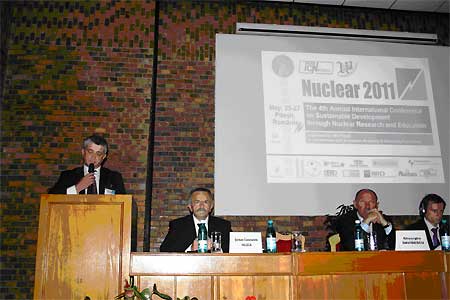
The conference was organised under the auspices of the Romanian Academy and benefited from the non-financial co-sponsorship of the Canadian Nuclear Society.
Organised over three days, NUCLEAR 2011 featured plenary sessions, parallel oral sessions, poster sessions and a round table dedicated to the subject of refractory alloys for Generation IV reactors.
During plenary sessions, guest speakers from the European Commission, CEA (France), PURAM (Hungary), SCK•CEN Belgium, ENEA (Italy), the Karlsruhe Institute of Technology (KIT), Germany, AECL Canada, the University of Pitesti, EnergoNuclear Romania and INR Pitesti provided insight in the following areas: INR’s important achievements and expectations, Euratom’s fission and fusion programmes, energy policies in Europe and its Member States, European Technological Platforms and their role in framing nuclear research, the nuclear industry’s expectations and demands with regards to research, minor actinide transmutation, materials for advanced nuclear systems, the development of research infrastructures for Generation IV reactors, the impact of Fukushima on severe accident management; progress with the Cernavoda Units 3 and 4 project and nuclear knowledge aspects in research and education.
Participants from ENEA Italy, Al-Jouf University Saudi Arabia, the University of Manchester in the UK, Nuclear Technology Consultancy UK, INCT Poland, CEA France, SERW Bulgaria, KIT Germany, the University of Jijel Algeria, Cernavoda NPP, Canberra Packard, National R&D Institute for Physics and Nuclear Engineering Horia Hulubei (IFIN-HH) Bucharest, the University of Pitesti, the National Commission for Nuclear Activities Control (CNCAN) in Romania, Nuclear Montaj Romania, the National R&D Institute of Cryogenics and Isotopes Technologies (ICSI), Valcea, CITON Romania, the Polytechnic University of Timisoara, Babes-Bolyai University in Cluj and the INR Pitesti each presented original scientific contributions in oral and poster sessions. They principally focused on the three main topics: nuclear energy, environmental protection and sustainable development.
The best three papers presented by young researchers, aged less than 35 years old, received awards. The Scientific Committee’s awards selection was based on papers’ originality, creativity, degree of novelty and the quality of their presentation. The most original and valuable papers presented to NUCLEAR 2011 will be proposed for publication in the Journal of Nuclear Research and Development, a new scientific publication edited by INR Pitesti and dedicated to current developments in nuclear energy.
NUCLEAR 2011 was a great success. One of the main conclusions was that in spite of the recent Fukushima accident - with all its on-going implications - nuclear power still remains the main provider of constant base-load of electricity and a valuable component in the energy mix for many countries.
http://www.euronuclear.org/e-news/e-news-33/stress-test.htm

In response to the accident at Japan's Fukushima Daiichi plant EU member countries have agreed to carry out so-called earthquake “stress tests” at all of their nuclear plants. In support of this initiative Westinghouse organised a Stress Test Workshop for European nuclear utilities, which took place on 12 and 13 May, in Brussels. A total of 37 people representing 12 customer utilities participated in the event. Representatives from Japan also attended.
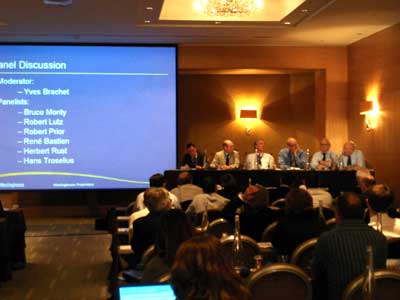
Anders Jackson, President of Westinghouse’s Europe, Middle East and Africa Region, welcomed the participants. In his opening address he noted that: “As a leader in nuclear design and technology Westinghouse has a responsibility to our customers and our industry. We are holding this workshop to better understand and meet your future needs.” He went on to say that: “The initiative to conduct ‘stress tests’ on the EU’s fleet of operating nuclear reactors has driven stakeholders to multiply actions in preparation for these safety and risk assessments…..Westinghouse is involved in the development of the tests and can bring to bear its original equipment manufacturer experience on severe accident management, and its global design base to assist utilities in addressing them.”
Delegates then listened to an appreciation of events at Fukushima from a Westinghouse plant operator’s perspective. The utility described how its plant might have responded to such a severe event as the one that occurred in Japan, and outlined the many modifications that have been made over the years to increase the safety of operating units.
René Bastien, Westinghouse’s Customer Project Manager for the Czech Republic, Slovakia, Hungary, Bulgaria and Electrabel, reviewed the company’s existing capacity for carrying out possible post-stress-test improvements. He discussed preventive measures, such as enhancing the resistance of plants to “beyond-design-basis station blackout events and enhancing resistant to external events,” as well as the development of mitigating measures and an overall analysis of existing capabilities. Mr. Bastien then went on to discuss related Westinghouse products, such as the Emergency Fuel Pool Cooling System and SHIELD® passive thermal shutdown seal, both of which have garnered increased interested in recent months.
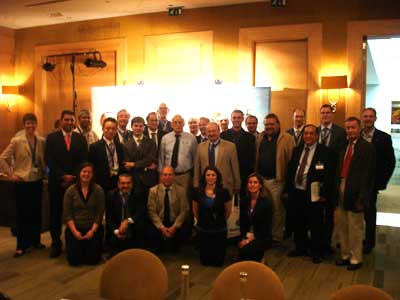
Other topics under discussion during the workshop included:
An “insider perspective” on Fukushima
A discussion on U.S. actions and initiatives following events in Japan
A description of the Westinghouse approach to stress-test methodology & possible solutions
The workshop concluded with a panel discussion moderated by Yves Brachet, Westinghouse’s Vice President and Managing Director for France, Benelux and the Republic of South Africa.
For further information on the workshop consult the dedicated web pages at:
www.westinghousenuclear.com
http://www.euronuclear.org/e-news/e-news-33/journal.htm

The idea of creating a new publication dedicated to nuclear research, development and innovation in nuclear power was born some years ago, against the backdrop of the nuclear renaissance. Nuclear power generation has proven its capacity to offer viable solutions to meet the strong demands of modern society, such as a continuous increase in electricity consumption, the need for guaranteeing energy security, the reduction of CO2 emissions … and the list goes on. After Fukushima nuclear power was once again thrust into the media spotlight, attracting the glare of attention from experts, policy-makers and the general public. A great emotional outpouring was noted from people around the world, followed by an increase in anti-nuclear sentiment. A significant re-evaluation of existing nuclear power programmes in some countries then occurred. Rapid political decisions were taken.
In our opinion nuclear power is at a crucial turning point; a tough decision lies ahead about whether or not to accelerate the development of a new generation of nuclear systems and to find the best possible solutions to the radioactive waste problem in order to achieve the objective of sustainable nuclear energy that modern society so craves. It is time for new research and new developments in the nuclear power sector.
So, the inauguration of our new publication in the spring of 2011 gave us an opportunity to exploit the special attention that the world is currently paying to nuclear issues. The Journal of Nuclear Research and Development (ISSN 2247 – 191X, ISSN-L = 2247 – 191X), www.jnrd-nuclear.ro, of JNRD, is a bi-annual publication, edited by the Institute for Nuclear Research (INR) Pitesti, Romania, whose Scientific Council is responsible for putting it together. An Advisory Group for Editorial Policy has been authorised by the INR Pitesti Scientific Council to supervise the Journal’s editorial policies and practices. |
 |
Responsibility for overall policy matters concerning JNRD lies with the Editor in Chief and Deputy Editor in Chief. JNRD editors are responsible, in a delegated way, for the scientific content and editorial matters related to the Journal.
JNRD established an international Editorial Advisory Board, whose members have the appropriate experience and scientific proficiency that the Journal demands.
It aims to cover a large range of nuclear research data. It offers free-of-charge publication to any original and authentic contribution related to nuclear power, giving special attention to interdisciplinary research. The objective of the Editorial Board is to bring together scientists and highlight valuable areas of research in order to promote effective and viable solutions to real challenges. The journal also pays equal attention to issues related to the role of the public in the decision-making process, to transparency and to participation as pre-requisites for a modern society. Research dedicated to nuclear education and knowledge management are welcome in the journal too and are considered crucial components for the future development of nuclear energy.
http://www.euronuclear.org/e-news/e-news-33/saphymo.htm

When a nuclear emergency like the one at Fukushima occurs you need a highly effective disaster management system in place. You need to constantly evaluate rapidly unfolding events, continuously monitor and assess the level of threat from radiation both in and around the disaster area and provide rapidly accessible and regularly updated information to those whose job it is to manage the disaster. One essential task is the regular and accurate measurement of gamma radiation doses and the calculation of the risk of contamination spreading to neighbouring populations. Unfortunately, when an accident takes place power black-outs, communications breakdowns, destroyed infrastructure and lack of human resources can make the measurement of gamma radiation very difficult to do. This is where Saphymo GmbH, a designer and manufacturer of radioactivity measurement and telematics systems, has a vital contribution to make. The Gamma TRACER/SkyLINK measurement system enables gamma radiation dose levels to be measured accurately at all times – a vital component for the effective management of disaster scenarios.
To learn more about how the system’s technology works click on the following link.
http://www.euronuclear.org/e-news/e-news-33/ygn.htm

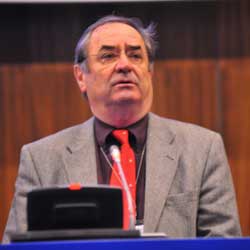 |
The Austrian Nuclear Society is delighted to announce that Helmuth Böck has won the 2011 Jan Runermark Award. He was nominated by the Austrian Young Generation for the continuous encouragement and tireless support that he has given to the fields of nuclear energy research and education in Austria over the years.
|
Helmuth Böck graduated in Technical Physics from the University of Vienna in 1966 and obtained his Professorship in Reactor Safety there in 1979. He was Reactor Manager at the Vienna Research Reactor (TRIGA) from 1967 to 2008. From 1970 to 1978 he worked as an expert on the licensing of the I&C Systems at the Zwentendorf Nuclear Power Plant (NPP).
Since 1975, he has been a consultant to the IAEA and has worked closely on over 150 research reactor projects. Since 1999, he has also provided the EU with expert guidance on numerous projects.
The Austrian Nuclear Society was founded in 1980 with Helmuth Böck as its first President. The primary aim of the Society was to get the Zwentendorf NPP up and running as it had not been allowed to start operating following the political referendum that took place in Austria in 1978. A second referendum was planned for 1986, but it had to be cancelled due to the Chernobyl accident and Austria’s anti-nuclear policy has remained in place ever since.
Faced with the very special circumstances that the Zwentendorf and Chernobyl referenda had created in Austria, Helmuth worked hard to preserve nuclear competence and knowledge in Austria alive. The foundation of a Young Generation Network in Austria was an important step in this direction. Bearing in mind the sceptical nuclear environment in Austria this has proven to be a very challenging project that has required patience, endurance and great application.
The Young Generation Network was officially founded following a visit by students to the Temelin NPP in 2006. Helmuth Böck gives many lectures on nuclear science at the Atominstitut and tries to motivate students to embrace nuclear technology. He has ceaselessly supported the Young Generation with their various projects, participated at round tables and in field trips and supervised many diplomas and PhD theses. He has, therefore, been a key factor in keeping a certain level of nuclear expertise and knowledge alive in our country.
The Fukushima accident and the prompt initiative that was taken by the YG to establish a public information office – the only one in Austria – suddenly placed the YG and the Atominstitute (ATI) at the centre of public and media attention. This was highlighted by the visit of the Minister of Science and Research on 18 March. With the help of the YG the ATI is now established as the centre of competence for nuclear science and technology in Austria. It has demonstrated that even in a strong anti-nuclear country like Austria maintaining nuclear competence and knowledge is of the highest importance - it cannot be abandoned in favour of other “soft technologies.”
Eileen Radde
Austrian Young Generation
http://www.euronuclear.org/e-news/e-news-33/bns-yg.htm


Dear BNS members,
Dear all,
As you all know, the future of nuclear power production seems to be jeopardized across Europe. Germany and Switzerland took their decisions and we all respect that democratic process (even if we are puzzled by the justification of these decisions). For Belgium, situation is unclear and thus it is even more important than before for BNS-YG to provide information to as much people as possible. The aim is not to convince people or polarize even more the debate but to give tools to people to make their own mind about what they want in the coming years. In order to do that, we tried the last few months to discuss with engineering students about the nuclear situation in Belgium and we will try to focus our future Evening Lectures and events around topics like seismic situations in Belgium… Please try to forward this newsletter to anyone that could be interested and also be aware that BNS-YG is available to collaborate if you are organizing informative events about nuclear.
Best regards
Mehdi Moussaïd, BNS-YG Chairman
yg@bnsorg.be
 |
|
 |
|
 |
|
|
|
 |
|
Website : www.bnsorg.be/yg
Info and questions: yg@bnsorg.be
Linkedin: Follow the BNS YG group on Linkedin
http://www.euronuclear.org/e-news/e-news-33/spanish-yg.htm

Jóvenes Nucleares (Spanish Young Generation in Nuclear, or JJNN) is a
non-profit making organisation and a member of the Spanish Nuclear Society (SNE).
The Universidad Politécnica de Madrid (Technical University of Madrid,
UPM) is one of the most prestigious technical universities in Spain and has
a very strong nuclear engineering training and research curriculum.
At the end of 2009, JJNN and UPM started to plan the creation of a new, first-of-a-kind Seminar in Nuclear Safety, focusing on advanced reactors (Generation III, III+ and IV). The brief was to provide a general description of the new reactors’ safety levels, comparing them with existing Generation II reactors from a technical point of view. In addition, it was described in a simple way that does not require a strong background in nuclear engineering in order to be interesting to as many people as possible.
After much hard work from JJNN, with the support of UPM, the first of the seminars was delivered in April 2010, at the Industrial Engineering School (ETSII). The lectures were conducted by young professionals, experts in the field, belonging to the Young Generation of the Spanish Nuclear Society and by companies and institutions active in the field of nuclear energy.
The seminar revolved around four sessions. In each session a comparison was made between previous and new technologies in terms of safety. On the first day an introductory lecture on PWR safety was given, followed by another one on the safety of the AP1000 reactor. The objective was to show clearly the advances in safety systems that the new technologies represent. In the other sessions similar comparisons were made between the BWR - ABWR/ESBWR and PWR – EPR reactors, respectively.
For the Generation IV reactors there were a specific lecture, longer that the others, to cover all the specific characteristics of these new kind of reactors of tomorrow. A special lecture about the ADS (Accelerator Driven Systems) was given to emphasise the importance of this new development in nuclear energy sustainability.
The seminar was very popular, with nearly 70 assistants from the university, nuclear companies and research centers attending each day. After each session there were very interesting and animated discussions between the lecturers and participants, which demonstrated the interest that the assistants had in the subjects being taught.
Both the UPM and the SNE strongly supported the seminar. The opening session, for example, was chaired by the Vice Chairman of the UPM, Emilio Mínguez, who is also a professor of nuclear engineering. The closing session was chaired by the Pesident of the Spanish Nuclear Society, José Emeterio Gutiérrez. A really important fact is that in 2011 the seminar became, for the first time, an official subject taught on the UPM curriculum. It will help to develop the lecture programme and the didactic materials used.
The assistants were asked for very detailed feedback on each of the lectures. Once all the satisfaction surveys were processed and the comments classified, improvements were put in place for the 2011 edition of the seminar. They are as follows:
The seminar lasted longer (15 h) and was given an ECTS valuation
The structure was changed to provide a 1h lecture on the old reactor + a 1.5 h lecture on the new one
There was one lecture on the PWR-W and another on the PWR-KWU
There was one lecture on the ABWR and another on the ESBWR
All documentation was distributed at the beginning of the seminar
A lecture for Day One entitled: Introduction to Nuclear Safety was created
A new lecture on High Temperature Reactors was also created
In 2011 the Seminar is thriving. Comments are invited and satisfaction surveys evaluated in order to improve the seminar every year.
http://www.euronuclear.org/e-news/e-news-33/ENYGF-2011.htm

From 17 – 20 May, the city of Prague, in the Czech Republic, played host to the European Nuclear Young Generation Forum (ENYGF). This biennial meeting of Europe’s young nuclear professionals was organised in association with the European Nuclear Society - Young Generation Network (ENS-YGN). The 2011 Forum was the fourth of its kind. The inaugural one took place in Zagreb (Croatia) in 2005 and was followed by Amsterdam (the Netherlands) in 2007 and Cordoba (Spain) in 2009. In early 2010, the ENS-YGN voted that the Czech Republic would host the 2011 edition.
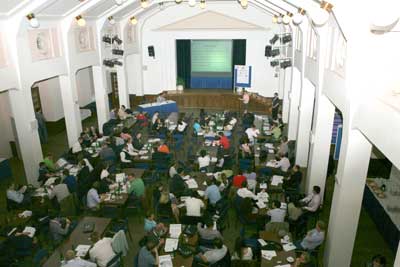
The Forum was jointly organized by the Czech Young Generation (CYG), ENS-YGN (with added assistance from the wider ENS network), the Czech Technical University in Prague (CTU) and the Czech Nuclear Education Network (CENEN).
The Forum’s goal is to provide an independent and unbiased platform from which young professionals can learn, discuss and further their knowledge of various nuclear topics. The organisers’ objective was to bring together young nuclear professionals in order to encourage communications and enhanced understanding between all sectors of the nuclear industry and to further promote and exploit the natural passion that the young generation has for the industry.
The ENYGF also aims to develop the working relationship between younger and more senior nuclear professionals and to thereby facilitate knowledge transfer, which is a crucial factor in sustaining the nuclear renaissance.
With new build projects under way across the world (including in the UK, France, Finland, the Czech Republic and Slovakia), young nuclear professionals must learn the lessons of the past so as to ensure that new reactors will continue to be built, and that safety and optimal operation will be further encouraged. Such knowledge transfer plays a key role in strengthening the position of nuclear in the region, especially within the context of the current political pressure that exists to phase-out the peaceful application of nuclear energy.
ENYGF 2011 addressed both these central issues of networking between young nuclear professionals and knowledge transfer from senior to junior specialists. Guest speakers from all areas of the nuclear European industry helped educate the young professionals present in Prague and provide them with invaluable insight. Meanwhile, the young professionals’ contributions (both in the form of oral and poster presentations) helped to underline to others present what specific fields are of most interest to them.
The conference also featured a programme of social events, including a boat trip by night on Vltava River to one of the Czech Republic’s most famous sights - Karlstejn Castle.
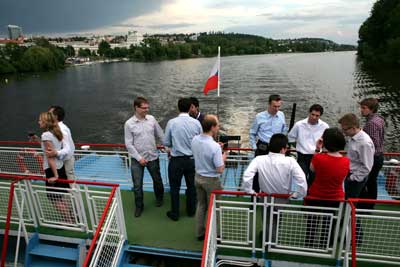
Technical trips to important nuclear installations and industrial complexes in and around Prague were also organised, including to three research reactors, the Tokamak, a radioactive waste disposal site and a reactor machinery complex. These visits gave participants a valuable opportunity to learn more about the nuclear environment in the Czech Republic.
Seven topics were voted onto the ENYGF agenda as the result of a special poll. Sessions were slightly adapted to take into account developments at Fukushima and the need to cover more unusual topics. The final list of topics presented at the Forum was as follows:
Nuclear safety and severe accidents
Education and training
The servicing and operating of NPPs
New build projects
Back-end issues
ITER and fusion
Nuclear medicine (poster session only)
Each session was chaired by a young professional from ENS-YGN, and featured presentations from both well-known senior experts and other young professionals. Here is an overview of the main sessions:
Nuclear safety and severe accidents, Part I: The focus here was on safety and dealing with severe accidents. The theme was introduced by Dana Drábová, Head of the State Office for Nuclear Safety of the Czech Republic
Nuclear safety and severe accidents, Part II: This session was introduced by Craig Marianno, from Texas A&M University, a member of the U.S. Expert Mission, who spoke about the Fukushima site after the accident in March 2011
New build projects: This session was opened by František Hezoučký, from the Faculty of Mechanical Engineering of the Czech Technical University in Prague
ITER and fusion: The subject of fusion was presented by Jan Mlynář from Institute of Plasma Physics at the Academy of Sciences of the Czech Republic
Education and training: This topic was addressed by Vladimír Slugeň, President of ENS
Servicing and operating of NPPs: This session was introduced by Daneš Burket, Director of the Technical Support Unit of the CEZ Group’s Power Division, who is responsible for the long-term operation of Dukovany NPP
Back-end Issues: The keynote speech was given by Philippe Bretault, Senior Process Expert and Deputy Director of the Expertise & Innovation E&P, at AREVA
A total of 211 participants, from 21 countries, representing the nuclear industry and the research and education sectors attended the four days of ENYGF. The majority was Europeans, but delegates from Korea, USA, Argentina and Russia also attended. A breakdown of the attendees is given in Figure 1 below.
Figure 1: Countries and participants to ENYGF2011
To summarise, ENYGF 2011 provided a worthwhile opportunity for young professionals to meet and mix with Europe’s “nuclear elite” in a friendly and didactic environment.
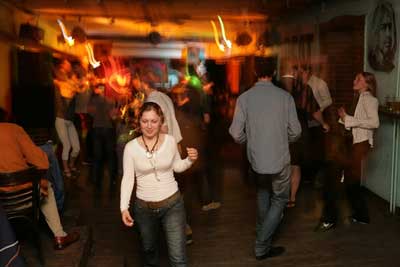
The local Organisation Committee would like to acknowledge the many people who supported ENYGF 2011. Their dedication and commitment were crucial in making it such a success.
We would also like to express our gratitude to the sponsors:
The Diamond Sponsor was AREVA
The Gold Sponsors were the CEZ Group, E.ON Kernkraft, GNS mbH and IYNC
The Silver Sponsors were the Nuclear Research Institute Řež, VF a.s. and Tractebel Engineering
The Bronze sponsors were the Radioactive Waste Repository Authority, Enrichment Technology, ENVINET a.s. and ŠKODA JS a.s.
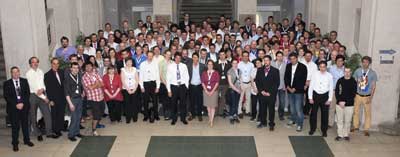
Additional information, including the presentations, a photo gallery and the book of extended abstracts is available on the official ENYGF2011 website at the following link: www.enygf.eu
http://www.euronuclear.org/e-news/e-news-33/nucnet.htm


Finalised UK Nuclear Proposals Back Eight Sites For Potential New-BuildPolicies & Politics 23 Jun (NucNet): The UK government today published finalised proposals that name eight sites across the country as suitable for the construction of new nuclear plants by 2025.Presenting the proposals to parliament, minister of state for energy Charles Hendry said: "Industry needs as much certainty as possible to make such big investments. These plans set out our energy needs to help guide the planning process, so that if acceptable proposals come forward in appropriate places, they will not face unnecessary hold-ups."
|
Plans & Construction
The report says the top 10 countries have around 320 GW of nuclear infrastructure between them and by 2020 this will increase to 405 GW.
The report concludes: “But this is only part of the picture, as countries from eastern Europe to Africa are also showing an interest in going nuclear.
“Taken together, it looks like something of a renaissance.”
The report says the impression that emerges from much commentary in the months since the crisis at Fukushima-Daiichi is that the nuclear industry now risks being banished to the Dark Ages.
For certain countries, the effect of Fukushima-Daiichi on popular and political support for nuclear power is significant, the report says.
“Burgeoning support for the abandonment of nuclear recently swung elections in Germany, which now plans to phase out nuclear power altogether. Japan, still reeling from its traumas, said it will not build any new reactors, whereas before the natural disaster it envisioned a new fleet.”
But the report says much of the nuclear scepticism that other governments have signalled does not represent an erosion of enthusiasm for nuclear power. Rather, it has more to do with showing tact in front of a jittery public.
This is, crucially, the case in the world’s keenest builder of nuclear plants: China, where the EIU predicts nuclear capacity will increase from 10.1 GW in 2010 to 63.1 in 2020, a rise of 527 percent.
In the US, the world’s leading generator of nuclear energy, capacity is seen growing from 101.1 GW in 2010 to 109 in 2020. In France, Europe’s leading nuclear generator, it could grow from 63.3 GW in 2010 to 66.4 in 2020.
Russia, says the EIU, will see an increase in nuclear capacity of 81 percent from 2010 to 2020, from 22.7 GW to 41 GW.
Martin Adams, the EIU’s energy editor, said he was initially surprised by the results, but now thinks they make sense. “A lot of the headlines have been very gloomy, but in fact the factors which have driven countries to build nuclear, those factors are still in place.”
Security & Safety
The countries said the tests, already being carried out in Europe, would enable an evaluation of the safety of nuclear facilities and test their capacity to withstand major incidents.
Countries taking part in the ministerial seminar, held today in Paris, also said it was necessary to reinforce “the global role and missions” of the International Atomic Energy Agency (IAEA), and in particular the nuclear safety review mechanisms for which it is responsible.
They called for reinforcement of the safety activities of the OECD Nuclear Energy Agency with a view to greater harmonisation of safety practices.
They also proposed that the IAEA review its safety standards in light of the Fukushima-Daiichi accident and ensure their proper application. In particular, the IAEA should review its standards on the construction and operation of nuclear power plants in seismic zones while taking account the impact of climate-related events.
Nathalie Kosciusko-Morizet, France’s minister for ecology, sustainable development, transport and housing, organised today’s seminar at the request of president Nicolas Sarkozy.
She said: “We cannot continue to think the way we did before Fukushima. What we have learned from this disaster, and what we must remember, is that one accident at a nuclear power plant is enough to create grave and irreversible consequences for man and the environment.”
Ms Kosciusko-Morizet said it is essential to improve co-operation on nuclear safety internationally because it is “not yet at its best possible level”.
Other proposals discussed at the seminar included the development of “emergency intervention teams” for crisis management at nuclear facilities.
Ministers called for crisis management training to be carried out at international level in order to benefit from the maximum amount of experience.
Ms Kosciusko-Morizet called for the harmonisation of crisis management procedures such as establishing distances for evacuation zones and the ceilings above which iodine tablets should be taken.
Ms Kosciusko-Morizet will present the conclusions of the seminar to nuclear regulatory authorities tomorrow.
The conclusions – along with those from her meeting with regulators tomorrow – will also be presented to the IAEA as part of its preparations for a ministerial conference on nuclear safety to be held in Vienna later this month.
http://www.euronuclear.org/e-news/e-news-33/IYNC 2012.htm

The IYNC (International Youth Nuclear Congress) and the North American Young Generation Network (NA-YGN) are pleased to announce the organization of the 7th International Youth in Nuclear Congress. The event, which is already a well-established fixture on the international conference landscape, will take place in Charlotte, North America , from 5-11 August 2012.
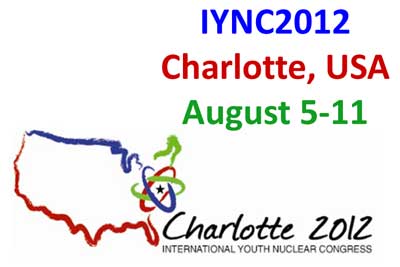
The conference integrates itself within a challenging global context that focuses, more than ever before, on the use of nuclear energy since the accident at Fukushima power plant. It is also organized within the framework of the nuclear renaissance that is taking place in many developing countries and across the world too. IYNC 2012 will offer delegates an opportunity to share knowledge, experience, best practices and information about nuclear energy between generations and peers. It is part of an on-going mission of promoting the peaceful use of nuclear power.
The conference will include topics like:
Plant design and construction
Operation and maintenance
Thermal hydraulics
Core design, simulation and modeling
Nuclear materials and chemistry
Structural integrity
Advanced and innovative nuclear systems
Fusion science and technology
Reactor safety and human factors
Radiation science
Medical applications
Nuclear policies, safeguards and economics
Human resources in nuclear
Young generation activities
Strategic planning
The plenary session will be followed by interactive workshops. The conference also has an informal programme, which gives participants an opportunity to network, adding to their career possibilities. Technical tours will be organised to American nuclear power plants, medical application facilities and fuel fabrication plants.
The conference is open to individuals and youth organisations involved in and concerned with nuclear fuel cycle developments and technologies in the world, teachers, scientist, students, researchers etc. Abstracts should be received by September 2011 and registration and early papers are expected from March 2012.
For more information please visit the website of the conference
at
iync.org/congresses/2012.html
http://www.euronuclear.org/e-news/e-news-33/other-conferences.htm


5 - 6 July 2011
London, United Kingdom
more
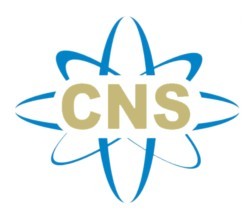
11 - 14 September 2011
Chinese Nuclear Society (CNS)
more
11 - 14 September 2011
Kraków, Poland
more
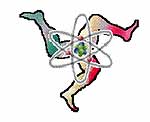
18 - 23 September
2011
Palermo, Sicily, Italy
more

28 - 30 September
Casta-Papiernicka, Slovakia
more

28 - 30 September 2001
Burgos, Spain
more

10 - 13 October 2011
Plzeň, Czech Republic
more

17-21 October 2011, Mol, Belgium

16 - 19 October 2011
Bucharest, Romania

6 - 11 November 2011
New Dehli, India
more

27-30 November 2011
Bansko ski resort, Bulgaria
more

11 - 16 December 2011 in Makuhari Messe in Chiba, Japan
The venue has been changed from September 4-9 in Aichi, to December 11-16 in Chiba.
Atomic Energy Society of Japan
email: global2011@jaea.go.jp
more

17 -21 September 2012
Como, Italy
more
http://www.euronuclear.org/e-news/e-news-33/Member-Societies.htm

Austrian
Nuclear Society |
Belgian
Nuclear Society |
Bulgarian
Nuclear Society |
Croatian
Nuclear Society |
Czech Nuclear Society |
Finnish
Nuclear Society |
French
Nuclear Energy Society (SFEN) |
German
Nuclear Society (KTG) |
Hungarian
Nuclear Society |
The
Israel Nuclear Society |
Italian
Nuclear Association |
Lithuanian
Nuclear Energy Association |
Netherlands Nuclear Society |
The Nuclear Institute |
Nuclear
Society of Russia |
Nuclear
Society of Serbia |
Nuclear
Society of Slovenia |
Polish
Nuclear Society |
Romanian
Nuclear Energy Association (AREN) |
Slovak
Nuclear Society |
Spanish
Nuclear Society |
Swedish
Nuclear Society |
Swiss
Nuclear Society |
http://www.euronuclear.org/e-news/e-news-33/Corporate-Members.htm
Links to ENS Corporate Members |
AF-Colenco Ltd., Nuclear Technology
Department |
Alpiq Ltd |
Alpiq Suisse Ltd. |
Andritz AG |
Ansaldo Nucleare S.p.A |
AREVA NP |
AREVA NP GmbH |
Atomtex SPE |
Atomic Energy Council (AEC) |
Atomic Energy of Canada Limited (AECL) |
Axpo AG |
BKW FMB Energie AG |
Centralschweizerische Kraftwerke (CKW) |
Chubu Electric Power Co. |
Chilean Nuclear Energy Commisssion |
CCI AG (formerly Sulzer Thermtec Ltd) |
Design Bureau "Promengineering" |
NV Elektriciteits-Produktiemaatschappij
Zuid-Nederland EPZ (Electricity Generating Co. Ltd in the
Southern Netherlands) |
E.O.N Kernkraft GmbH |
Euro Nuclear Services BV |
Electrabel, Generation Department |
Electricité de France (EDF), Communication Division |
ENUSA Industrias Avanzadas SA |
EXCEL Services Corporation |
GE Nuclear Energy |
IEA of Japan Co. Ltd |
Japan Electric Power Information Center (JEPIC) link |
Kernkraftwerk Gösgen-Däniken
AG |
Kernkraftwerk Leibstadt AG (KKL), |
L-3 Communications MAPPS Inc. |
Linn High Therm GmbH |
Elektroinstitut Milan Vidmar |
NRG Arnhem |
NRG Petten |
NUKEM Technologies GmbH |
ONET TECHNOLOGIES |
Paks Nuclear Power Plant Ltd |
Paul Scherrer Institute |
Polimaster Ltd |
|
Siempelkamp Nukleartechnik
GmbH |
SKB (Swedish Nuclear Fuel and Waste Management
Company) |
Studiecentrum voor Kernenergie, Centre d’Etude
de l’Energie Nucléaire SCK/CEN |
Synatom |
Taiwan Atomic Energy Council (AEC) |
Taiwan Power Company (Taipower) |
"Technoatomenergo" Close Joint-Stock
Company |
Teollisuuden Voima Oyj / Industrial Power
Company Ltd (TVO) |
Tokyo Electric Power Co. (London Office) |
Tractebel Engineering S. A. |
UNESA |
Urenco Limited |
USEC Inc. |
Vattenfall AB |
VNS – Vinçotte Nuclear Safety |
VTT Nuclear |
Westinghouse Electric Company |
World Association of Nuclear Operators
(WANO), |
http://www.euronuclear.org/e-news/e-news-33/editorial.htm

Editorial Staff:
Mark O’Donovan, Editor-in-Chief
Contributors to this Issue:
Boryana Atanasova
(Bulgarian Nuclear Society)
Amy Bird (YGN)
Adrian Bull (Westinghouse)
David Dalton (NucNet)
Bernd Grambow (SUBATECH)
Lenka Heraltová (YGN)
Judith Holcroft (Cogent)
Emilia Janisz (ENS)
G. Jimenez (Jóvenes Nucleares)
Petr Kovařík (YGN)
E. Minguez (Universidad Politécnica de Madrid)
Mehdi Moussaïd (BNS-YG)
Guy Parker (Foratom)
Eileen Radde (YGN)
M. Sanchez (Jóvenes Nucleares)
Francis Sorin (SFEN)
Vladimir Slugen (ENS)
Adrew Teller
Pierre Van Iseghem (SCK•CEN)
Ondřej Zlámal (YGN)
Realisation:
Marion Brünglinghaus
Rue Belliard 65, BE-1040 Brussels
Phone +32 2 505 30 50 - Fax: +32 2 502 39 02
E-mail: info@euronuclear.org - http://www.euronuclear.org
The ENS News is a quarterly publication, in electronic
form only.
Copyright notice ©2011 European Nuclear Society.
Reproduction is authorised provided that the ENS News is acknowledged as the
source – except where otherwise stated.
![]()
© European Nuclear Society, 2011